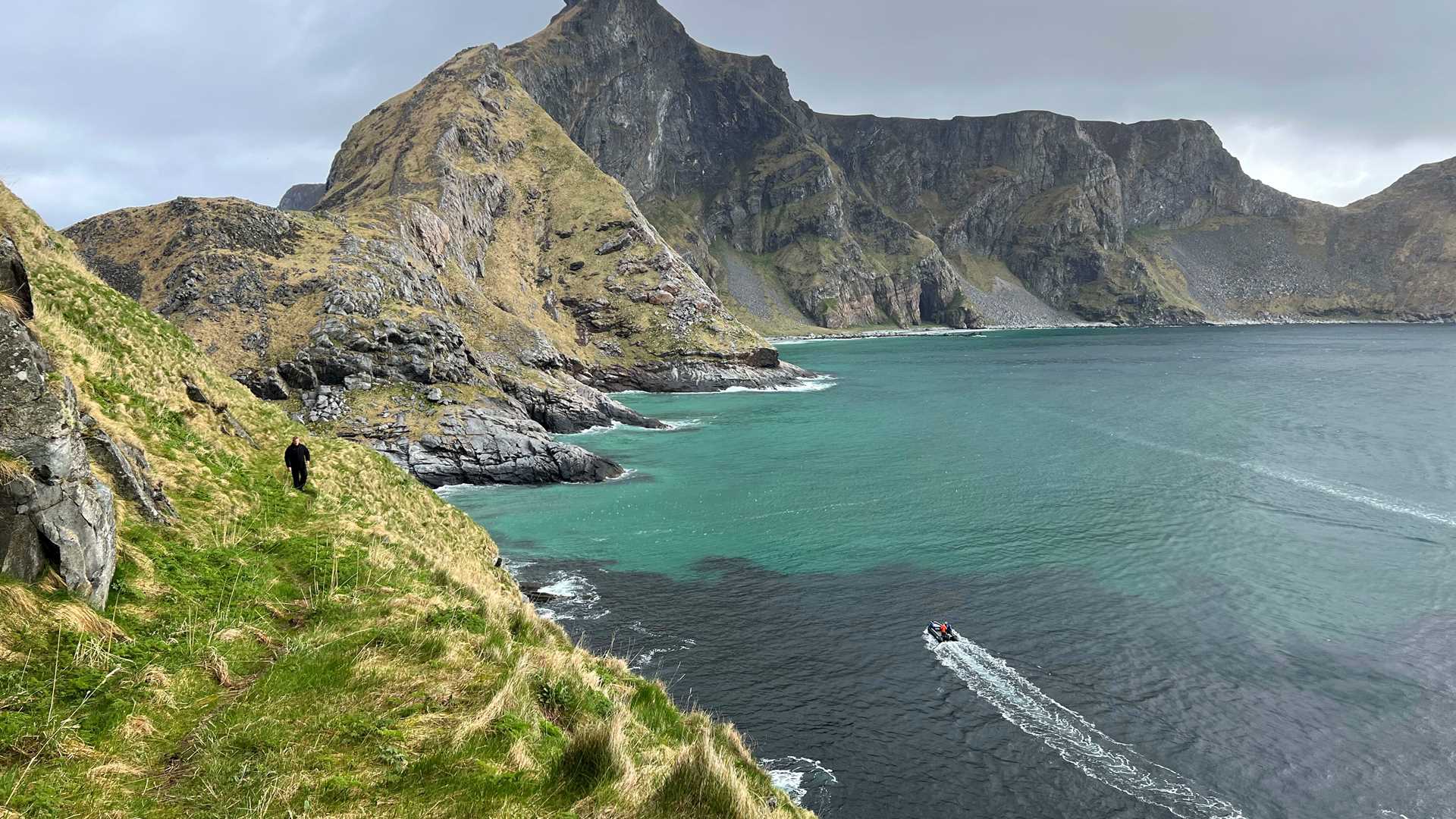We woke up to a fresh breeze and a slight drizzle of rain as National Geographic Resolution was getting close to Værøy, one of the largest islands in the archipelago of Lofoten. We anchored just off Måstad, a small, abandoned fishing village close to rich fishing grounds. The wind gradually slowed, and most guests opted for hikes on shore. The long hikers went up a steep slope towards a ridge with grand views. A few guests preferred a Zodiac cruise, whereas the majority chose to go hiking along a picturesque wagon road leading to the opposite side of the island. Some guests spotted a white-tailed eagle soaring above, and we also found a dead white-tailed eagle on the ground. Værøy is one of the few islands with puffins, an important supplement to the locals’ food supply. A special breed of dog, the ‘lundehund’ (puffin dog), was used to find puffins under rocks in the many screes behind the village. The unusual dog is known to have its origin in this part of Lofoten. After World War II, a growing number of people moved to the mainland or Sørland, the main settlement on the eastern side of Værøy. The closing of the local school in 1953 was a major blow to the community. During a final exodus in 1959, most of the remaining families left this little village. The last inhabitant of Måstad left the village in 1974. Today, the few remaining houses are a precious link to the people’s descendants and are now being carefully restored and maintained as summer homes.
After lunch, naturalist Madalena Patacho gave a fascinating presentation on cod, the fish species that has played an important role in the economy of northern Norway for centuries. In the late afternoon, we went to Reine. This fishing village is framed by spectacular scenery and has a combination of old and new buildings. Up until the end of the 19th century, many cabins were constructed, offering shelter for fishermen coming in with their rowboats. These cabins were called “rorbu”–rower’s cabins. During Lofoten’s cod fishing season, Reine used to be visited by several hundred fishermen and land-based workers. In the old days, this village was a self-contained community. The squire was responsible for everything, from the cabins, the shop, the steamship office, and the bank, to buying and exporting cod. The many vessels that we see along the docks in Reine today prove that this settlement is still a very important fishing village in the Lofoten Islands. In the late evening, Captain Martin carefully nosed the ship into a tiny, scenic fjord named Trollfjorden.
Traveling inside the amazingly narrow Trollfjorden coupled with the scenery that we enjoyed in the Lofoten Islands made for a mind-blowing day. We have added another bucket of wonderful memories to our voyage portfolio.







